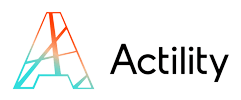- Predict outdoor LoRaWAN® coverage and visualize heatmaps by penetration level (Outdoor, Daylight, Deep Indoor, Basement).
- Smart Antenna Selection reaches a target coverage (%) inside your AOI with the fewest gateways.
- Overlay predictions with device KPIs (health, PER, SNR) and planned device locations to validate and prioritize densification.
- Seamless ThingPark integration (Community/Wireless/Enterprise) with SSO and automatic import of stations, antennas, heights, environments.
- SAFE propagation model tuned on >370 links (≈1 dB average delta); an optimistic model is available for sensitivity checks.
- Bi-directional link budgets (UL/DL) with realistic interference margins; use RX2 assumptions to spot DL limits.
- Real commercial antenna patterns (H & V), terrain/DSM/DTM and diffraction for field-like predictions.
- Regulatory presets by country (bands/EIRP) keep scenarios deployable (EU868, US915, etc.).
- Clean inputs matter: accurate device TX, (possibly negative) antenna gains, height ~0.5 m for worst-case, valid coordinates.
- Exports provide an audit trail: KMZ/PNG/TIF + CSV/JSON; hosted results retained ~90 days → archive locally.
- Credits model: free credits (5 base stations / 90 days) used before paid credits via ThingPark Market.
- On-prem/OCP users can plan today via CSV imports; API or on-prem integrations available via Actility.



